PRODUCT DESCRIPTION
LOCTITE® 3108™ provides the following product characteristics:
Technology Acrylic
Chemical Type Acrylated urethane
Appearance (uncured) Translucent colorless liquidLMS
Components One component – requires no mixing
Viscosity Medium
Cure Ultraviolet (UV) light
Cure Benefit Production – high speed curing
Application Bonding
Flexibility Enhances load bearing & shock absorbing characteristics of the bond area.
LOCTITE® 3108™ is designed primarly for potting and sealing glass to metal joints that must withstand thermal cycling and environmental exposure. The product has shown excellent capabilities in bonding dissimilar rigid substrates.
TYPICAL PROPERTIES OF UNCURED MATERIAL
Specific Gravity@ 25 °C 1.08
Flash Point – See MSDS
Viscosity, Brookfield – RVT, 25 °C, mPa·s (cP):
Spindle 4, speed 20 rpm 3,600 to 6,600LMS
TYPICAL CURING PERFORMANCE
LOCTITE® 3108™ can be cured by exposure to UV light at 365nm. Surface cure is enhanced by exposure to UV light in the 220 to 260 nm range. Cure rate and ultimate depth of cure depend on light intensity, spectral distribution of the light source, exposure time and light transmittance of the substrate through which the light must pass.
Fixture Time
Fixture time is defined as the time to develop a shear strength of 0.1 N/mm².
UV Fixture Time, Glass, seconds:
Medium Pressure Hg Arc bulb, Zeta® 7200 light source: 50 mW/cm², measured @ 365 nm ≤15LMS
Electrodeless, D bulb: 100 mW/cm², measured @ 365 nm 7
Depth of Cure vs. Irradiance (365 nm)
The graphs below show the increase in depth of cure with time at 50 mW/cm² and 100 mW/cm² as measured from the
thickness of the cured test piece.
TYPICAL PROPERTIES OF CURED MATERIAL
Cured @ 100 mW/cm², for 30 seconds using an Electrodeless
system, D bulb
Physical Properties:
Shore Hardness, ISO 868, Durometer A ≥72LMS
Water Absorption, ISO 62, %:
2 hours in boiling water 4.9
Elongation, at break, ISO 527-3, % 330
Tensile Modulus, ISO 527-3 N/mm² 18.6
(psi) (2,670)
Tensile Strength, at break, ISO
527-3
N/mm² 7.91
(psi) (1,135)
UV Depth of Cure, mm:
Cured @ 100 mW/cm², measured @
365 nm,
for 15 seconds
≥1.6LMS
Electrical Properties:
Surface Resistivity, IEC 60093, Ω∙cm 7.84×1014
Volume Resistivity, IEC 60093, Ω·cm 1.06×1014
Dielectric Breakdown Strength,
IEC 60243-1, kV/mm
37
Dielectric Constant / Dissipation Factor, IEC 60250:
100-Hz 7.47 / 0.19
1-kHz 6.8 / 0.07
1-MHz 5.59 / 0.05
TYPICAL PERFORMANCE OF CURED MATERIAL
Adhesive Properties
Cured @ 100 mW/cm², measured @ 365 nm, for 30 seconds using
an Electrodeless system, D bulb, (samples with 0.127 mm gap)
Block Shear Strength, ISO 13445:
Glass to Glass N/mm² 4.2
(psi) (610)
Glass to Steel N/mm² 3.5
(psi) (510)
Glass to Aluminum N/mm² 3.1
(psi) (445)
Cured @ 100 mW/cm², measured @ 365 nm, for 30 secondsusing a
medium pressure Hg Arc bulb, Zeta® 7200 light source
Block Shear Strength, ISO 13445:
Polycarbonate to
Polycarbonate
N/mm² ≥5.5LMS
(psi) (≥797)
TYPICAL ENVIRONMENTAL RESISTANCE
Cured @ 100 mW/cm², measured @ 365 nm, for 30 seconds using
an Electrodeless system, D bulb
Block Shear Strength, ISO 13445:
Polycarbonate:
0.127 mm gap
Chemical/Solvent Resistance
Aged under conditions indicated and tested @ 22 °C.
% of initial strength
Environment °C 100 h 500 h 1000 h
Water immersion 22 75 40 45
Heat/humidity 95% RH 38 80 100 100
Salt fog 35 65 55 60
GENERAL INFORMATION
This product is not recommended for use in pure oxygen
and/or oxygen rich systems and should not be selected as
a sealant for chlorine or other strong oxidizing materials
For safe handling information on this product, consult the
Material Safety Data Sheet (MSDS).
Directions for use:
1. This product is light sensitive; exposure to daylight, UV
light and artificial lighting should be kept to a minimum
during storage and handling.
2. The product should be dispensed from applicators with
black feedlines.
3. For best performance bond surfaces should be clean and
free from grease.
4. Cure rate is dependent on lamp intensity, distance from
light source, depth of cure needed or bondline gap and
light transmittance of the substrate through which the
radiation must pass.
5. Cooling should be provided for temperature sensitive
substrates such as thermoplastics.
6. Plastic grades should be checked for risk of stress
cracking when exposed to liquid adhesive.
7. Excess uncured adhesive can be wiped away with organic
solvent (e.g. Acetone).
8. Bonds should be allowed to cool before subjecting to any
service loads.
Loctite Material SpecificationLMS
LMS dated July-3, 2003. Test reports for each batch are
available for the indicated properties. LMS test reports include
selected QC test parameters considered appropriate to
specifications for customer use. Additionally, comprehensive
controls are in place to assure product quality and
consistency. Special customer specification requirements may
be coordinated through Henkel Quality.
Storage
Store product in the unopened container in a dry location.
Storage information may be indicated on the product container
labeling.
Optimal Storage: 2 °C to 8 °C. Storage below 2 °C or
greater than 8 °C can adversely affect product properties.
Material removed from containers may be contaminated during
use. Do not return product to the original container. Henkel
Corporation cannot assume responsibility for product which
has been contaminated or stored under conditions other than
those previously indicated. If additional information is required,
please contact your local Technical Service Center or
Customer Service Representative.
Conversions
(°C x 1.8) + 32 = °F
kV/mm x 25.4 = V/mil
mm / 25.4 = inches
μm / 25.4 = mil
N x 0.225 = lb
N/mm x 5.71 = lb/in
N/mm² x 145 = psi
MPa x 145 = psi
N·m x 8.851 = lb·in
N·m x 0.738 = lb·ft
N·mm x 0.142 = oz·in
mPa·s = cP
Note
The data contained herein are furnished for information only and are believed to be reliable. We cannot assume responsibility for the results obtained by others over whose methods we have no control. It is the user’s responsibility to determine suitability for the user’s purpose of any production methods mentioned herein and to adopt such precautions as may be advisable for the protection of property and of persons against any hazards that may be involved in the handling and use thereof. In light of the foregoing, Henkel Corporation specifically disclaims all warranties expressed or implied, including warranties of merchantability or fitness for a particular purpose, arising from sale or use of Henkel Corporation’s products. Henkel Corporation specifically disclaims any liability for consequential or incidental damages of any kind, including lost profits. The discussion herein of various processes or compositions is not to be interpreted as representation that they are free from domination of patents owned by others or as a license under any Henkel Corporation patents that may cover such processes or compositions. We recommend that each prospective user test his proposed application before repetitive use, using this data as a guide. This product may be covered by one or more United States or foreign patents or patent applications.
点击下载PDF版文件学习:
 loctite 3108 TDS (65.3 KB, 7 次)
loctite 3108 TDS (65.3 KB, 7 次)
您没有权限下载此文件。


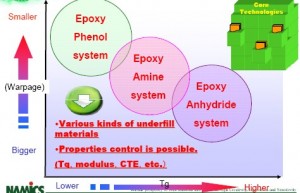
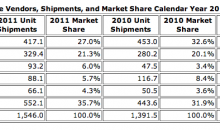
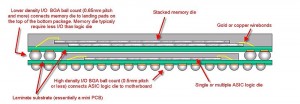
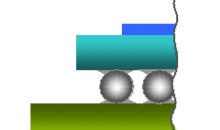
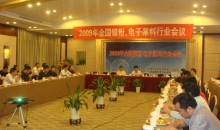
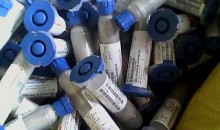
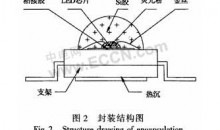
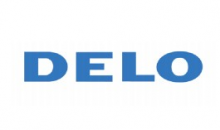
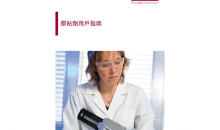
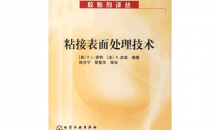
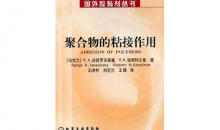
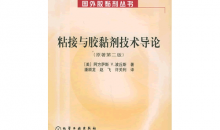



《【扒一扒】日本高纯球形硅微粉材料生产商》: 作为一种无机非金属矿物功能性粉体材料,硅微粉广泛应用于电子材料、电工绝缘材料、胶黏剂、特种陶瓷、精密铸造、油漆涂料、油墨、硅橡胶等领域。 目前,世界上只有中国、日本、韩国、美国等少数国家具备硅微粉生产能力... 全文 ?